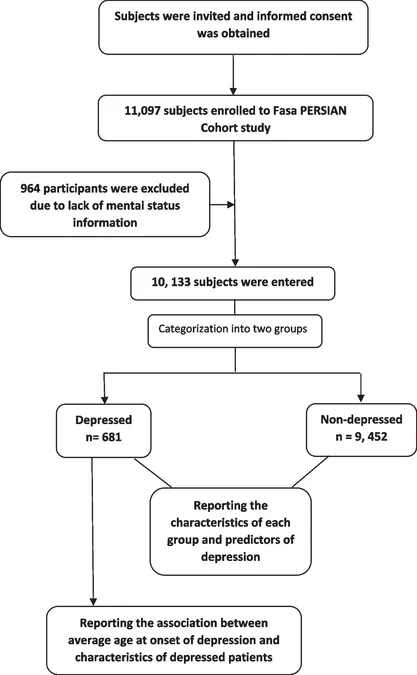
Unveiling Depression in Rural Iran: Key Predictors and Insights
2025-05-17
Author: Yu
Depression: A Growing Crisis in Rural Communities
Depression is a pressing global health issue, now recognized as the leading cause of disability. In 2015, it ranked third among health concerns worldwide. The situation in Iran echoes this alarming trend, where depression stands as the third most significant health challenge, severely impacting individuals and the healthcare system.
Rural Vulnerabilities: A Closer Look
Rural populations in Iran face unique hardships, with higher poverty rates and less access to healthcare services, particularly in mental health. The lack of social support and fragmented healthcare resources contribute to heightened depression rates compared to urban areas.
Sociodemographic Risk Factors: Who is Most Affected?
Research highlights that sociodemographic factors significantly influence depression risk. Individuals with lower socioeconomic status, particularly among women, face nearly double the likelihood of developing depressive symptoms. Other contributing factors include educational attainment, relationship issues, and financial struggles, showcasing the urgency for targeted mental health interventions.
Health Factors: The Overlap with Physical Illnesses
Physical health conditions, including diabetes and heart disease, increase the likelihood of depression, as they notably affect quality of life. Additionally, comorbid mental health disorders along with depression frequently worsen overall prognosis.
Age of Onset: A Double-Edged Sword
Depression often surfaces around the age of 30, but earlier onset correlates with more severe outcomes, including suicide risk. This study emphasizes the need to recognize and address factors like socioeconomic status and physical activity that influence the age of onset.
Recent Study: In-Depth Exploration in Southern Iran
A comprehensive study involving over 10,000 residents in rural Sheshdeh, Iran, provided insights into the predictors of depression and the age of its onset. The research team conducted detailed assessments to evaluate the prevalence and factors associated with depressive disorders, utilizing established psychiatric diagnostic criteria.
Key Findings: Understanding Depression's Landscape
Out of the study participants, approximately 6.7% met the criteria for depression, with a striking sex disparity—women were significantly more affected. Unemployment and low educational attainment were crucial predictors, alongside physical and psychological comorbidities.
Implications for Mental Health Strategies
These findings underline the importance of tailored mental health services within primary care, particularly for vulnerable populations in rural areas. Addressing the interplay of sociodemographic and clinical factors can pave the way for more effective intervention programs.
Looking Ahead: Future Research Directions
The study's limitations highlight the need for longitudinal research to better understand causality. As mental health awareness increases, it is imperative to explore and address the unique challenges faced by rural communities in Iran and beyond.


 Brasil (PT)
Brasil (PT)
 Canada (EN)
Canada (EN)
 Chile (ES)
Chile (ES)
 Česko (CS)
Česko (CS)
 대한민국 (KO)
대한민국 (KO)
 España (ES)
España (ES)
 France (FR)
France (FR)
 Hong Kong (EN)
Hong Kong (EN)
 Italia (IT)
Italia (IT)
 日本 (JA)
日本 (JA)
 Magyarország (HU)
Magyarország (HU)
 Norge (NO)
Norge (NO)
 Polska (PL)
Polska (PL)
 Schweiz (DE)
Schweiz (DE)
 Singapore (EN)
Singapore (EN)
 Sverige (SV)
Sverige (SV)
 Suomi (FI)
Suomi (FI)
 Türkiye (TR)
Türkiye (TR)
 الإمارات العربية المتحدة (AR)
الإمارات العربية المتحدة (AR)